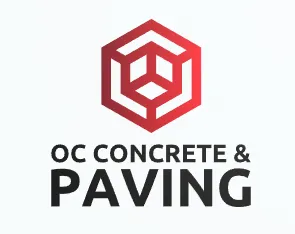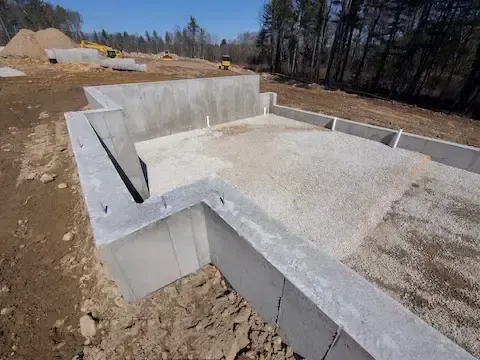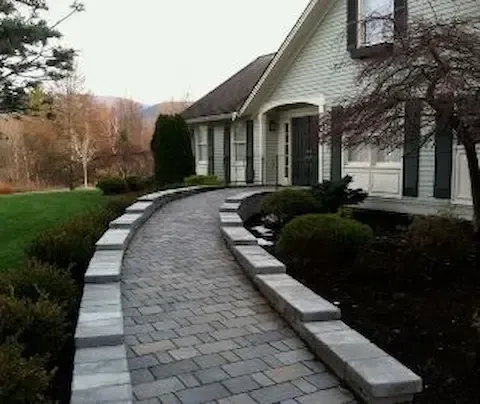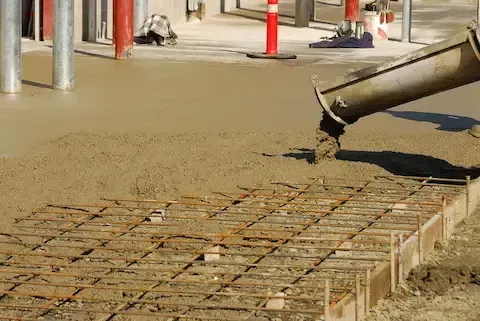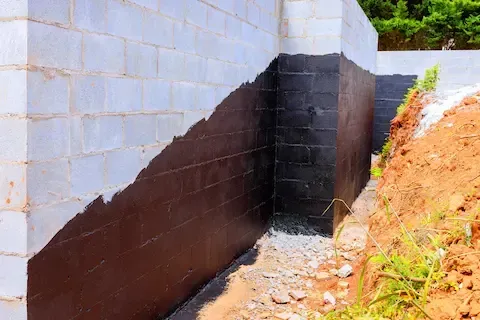Concrete Repair & Resurfacing in Oregon City OR
Professional Solutions for Damaged Concrete
Damaged concrete doesn't always require complete replacement, but it does require honest assessment and proper repair techniques. We evaluate concrete throughout Oregon City—driveways with surface scaling, patios with settlement cracks, walkways with spalling edges—and recommend solutions based on actual conditions, not what's easiest to sell. Some damage indicates structural failure that demands replacement. Other situations respond well to professional repair that extends service life at a fraction of replacement cost. The key is accurate diagnosis of what's causing the damage and matching the repair method to the underlying problem. Surface damage from freeze-thaw exposure, for instance, requires different treatment than cracking from soil settlement or structural overload.
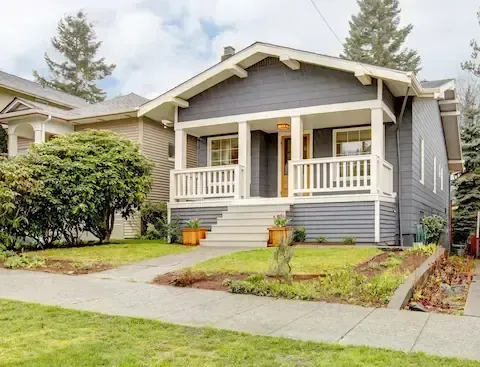
We handle various concrete repairs: patching damaged areas with properly bonded repair materials, resurfacing worn surfaces with overlays that restore appearance and function, addressing cracks with routing and sealing or structural repair depending on cause, and correcting settlement issues through mudjacking or slab stabilization techniques. Our repair work considers Oregon's climate demands—we use materials formulated for exterior exposure and temperature cycling, apply proper surface preparation so repairs actually bond, and address underlying drainage or structural issues that contributed to the original damage. Whether you're dealing with minor surface damage or significant structural concerns, we provide straightforward assessment of your options, realistic expectations about repair performance and longevity, and quality workmanship that maximizes the value of repair over replacement when appropriate.
What's Included in our Concrete Repair & Resurfacing service?
Crack Repair & Stabilization
Structural crack repair using routing, sealing, and stabilization techniques appropriate to crack cause, preventing further damage while restoring concrete integrity.
Surface Resurfacing & Overlays
Concrete resurfacing that repairs surface damage while improving appearance, using bonded overlays or micro-toppings designed for Oregon's weather exposure.
Settlement Correction & Leveling
Mudjacking or polyurethane foam injection to lift and level settled concrete, addressing the underlying problem while avoiding unnecessary replacement.

Concrete Services Throughout Oregon City & Clackamas County
Concrete Solutions Engineered for Oregon's Climate
Our concrete services extend throughout Clackamas County, bringing the same expertise and quality standards to every community we serve. We're familiar with soil conditions, drainage challenges, and building requirements across the area, having completed projects in diverse locations from riverfront properties to hillside developments. Whether you're in Oregon City's historic downtown, the West Linn hills, Lake Oswego neighborhoods, or outlying communities, we deliver concrete work engineered for your specific location's conditions and requirements.
Proudly serving West Linn, Lake Oswego, Milwaukie,
Gladstone and Wilsonville for 15+ years.
Frequently Asked Questions
Concrete Contractor can be complex, and we’re here to provide answers to common questions. Here are some frequently asked questions from our clients.
Frequently Asked Questions about concrete services
How long does concrete take to cure in Oregon's climate?
Concrete reaches initial set (hard enough to walk on) within 24-48 hours in typical conditions, but curing is a longer process. Concrete achieves about 70% of design strength at 7 days and reaches full strength at 28 days. Oregon's cooler, wetter climate can slow this process—cold temperatures delay curing while our frequent rain actually benefits curing by preventing too-rapid moisture loss. For practical purposes: light foot traffic after 24-48 hours, furniture and planters after 7-10 days, vehicle traffic on driveways after 7 days for cars (14 days for heavier vehicles), and heavy loads or sustained use after 28 days. Cold-weather installations require longer cure times. We protect fresh concrete from rain, temperature extremes, and rapid drying during initial curing—this affects timeline but ensures proper strength development. Sealing typically waits 28-60 days to allow moisture release. The specific timeline for your project depends on concrete mix design, weather conditions, and intended use—we'll provide guidance based on your situation.
What causes concrete to crack and can it be prevented?
Some concrete cracking is inevitable—concrete shrinks slightly as it cures, and thermal expansion/contraction creates stress—but proper installation minimizes cracking and controls where cracks occur. Major causes of problematic cracking include inadequate or poorly compacted base (allowing settlement), insufficient reinforcement for site conditions and loads, lack of control joints (which force cracks to occur in predetermined locations), poor concrete mix or placement techniques, and inadequate curing. Oregon-specific factors include freeze-thaw damage from water penetration, soil movement from our wet climate, and tree roots disturbing the base. Prevention requires comprehensive approach: proper site evaluation identifying potential issues, adequate base preparation with thorough compaction, appropriate reinforcement (wire mesh or rebar) for your specific situation, strategically placed control joints, quality concrete mix designed for our climate, and good drainage preventing water-related problems. Even with perfect installation, hairline cracks may develop—that's normal concrete behavior. But proper installation prevents the large structural cracks that affect performance and appearance. We focus on controlling cracking rather than claiming we can eliminate it entirely.
Do I need a building permit for concrete work in Oregon City?
Permit requirements depend on project scope and type. Generally, you need permits for concrete foundations (all new building foundations require permits as part of overall construction), structural retaining walls (typically those exceeding 4 feet in height), and commercial concrete work (most commercial installations require permits and inspection). You typically don't need permits for residential driveways, patios, or walkways (though some exceptions exist for historic district properties or environmentally sensitive areas). Concrete repairs generally don't require permits unless they involve structural elements. When in doubt, check with Oregon City Building Department before starting work—they can provide definitive answers for your specific project. Working without required permits creates problems: no inspection to verify quality, potential issues when selling property or filing insurance claims, and possible requirement to remove unpermitted work. We handle permit applications when required, coordinate inspections, and ensure work meets code requirements. Don't work with contractors who suggest skipping required permits to save money or time—proper permits protect your investment and ensure work meets safety standards.
Can you work during winter in Oregon City?
Yes, concrete installation is possible during Oregon City's winter months with appropriate precautions and techniques, though scheduling becomes less predictable due to weather. Concrete requires temperatures above 40-50°F during placement and initial curing (specific requirements depend on concrete mix and protection methods). We monitor weather forecasts closely and only pour when conditions support proper curing. For winter work, we use cold-weather concrete mixes with accelerators that cure at lower temperatures, provide temporary heating or insulation blankets protecting fresh concrete from freezing, and plan pours for warmer parts of days when possible. Winter concrete typically costs slightly more due to these additional precautions and materials. And scheduling is less certain—we may need to postpone pours when weather doesn't cooperate. For non-emergency projects, most homeowners find spring through fall scheduling more straightforward. But when winter work is necessary (foundation work for construction schedules, urgent repairs, commercial projects with deadline requirements), we can execute quality installations using proper cold-weather techniques. The key is working with experienced contractors who understand concrete's temperature requirements and won't compromise quality to maintain aggressive schedules.
How much does concrete cost in Oregon City?
Concrete costs vary significantly based on project specifics, but typical residential work in Oregon City ranges from $8-15 per square foot for basic flatwork (driveways, patios) and $12-20+ per square foot for decorative options (stamped, colored, exposed aggregate). Foundations and structural work typically cost more due to engineering requirements and complexity. Several factors affect pricing: site accessibility (difficult access increases costs), site preparation requirements (removing existing concrete, extensive grading, poor soil conditions), concrete thickness and reinforcement (heavier-duty installations cost more), finish type (decorative finishes add cost over standard broom finish), drainage work (French drains, slope corrections, etc.), and project size (larger projects often have lower per-square-foot costs). These are rough ranges—actual costs require site evaluation. We provide free on-site estimates that account for your specific conditions and requirements. Be cautious of quotes significantly below typical ranges—they likely indicate inadequate base preparation, insufficient reinforcement, or other shortcuts that save the contractor money but compromise your concrete's performance. Quality concrete installation isn't cheap, but it costs far less than replacing failed work in a few years.
What's your service area beyond Oregon City?
We serve Oregon City and surrounding Clackamas County areas including West Linn, Lake Oswego, Milwaukie, Gladstone, Canby, Wilsonville, and nearby communities. Our service area extends roughly 20-25 miles from Oregon City, covering most of Clackamas County and portions of adjacent counties. For projects outside this primary area, we evaluate distance, project size, and scheduling to determine if we can provide service effectively. Larger commercial projects or specialized work (historic restoration, complex hillside installations) may justify traveling farther. Distance affects both our costs (travel time and logistics) and our ability to provide timely service for any warranty or follow-up needs. We prefer working within our established service area where we can maintain direct oversight and respond quickly if issues arise. If your project is outside our typical service area but you're interested in working with us, contact us to discuss—we'll provide honest assessment of whether we're the right choice for your location or recommend alternative contractors who serve your area well.
Frequently Asked Questions about Concrete Repair & Resurfacing
When should I repair concrete versus replacing it completely?
The decision between repair and replacement depends on damage extent, underlying cause, and cost-effectiveness of each option. Generally, consider repair when damage affects less than 30% of the surface area, the structural integrity remains sound (no significant settlement or base failure), and the underlying cause can be corrected to prevent recurrence. Surface damage like scaling, spalling, or minor cracks often responds well to proper repair at 40-60% of replacement cost. However, consider replacement when multiple large cracks indicate structural failure, significant settlement has occurred (more than 2-3 inches), the base has failed and continues settling, or widespread deterioration affects most of the surface. Sometimes repair serves as a temporary solution while you budget for eventual replacement—honest contractors will explain this rather than overselling repair longevity. We evaluate your concrete's condition thoroughly, identify what caused the damage, and recommend the most cost-effective solution considering both immediate costs and long-term performance. Some situations fall in the gray area where either approach could work—we'll explain the pros, cons, and realistic expectations for each option.
What causes concrete to spall or flake on the surface?
Spalling (surface flaking or chipping) typically results from water penetration and freeze-thaw damage, though several factors contribute. Water enters concrete through tiny pores and cracks. When temperatures drop below freezing, that water expands, creating pressure within the concrete. Repeated freeze-thaw cycles progressively damage the surface until it begins flaking away. In Oregon City, we see this particularly on driveways and walkways exposed to de-icing salts, which make the problem worse by drawing more moisture into concrete. Poor finishing practices during installation can create weak surface layers more prone to spalling. Using concrete with inadequate air entrainment (tiny intentional air bubbles that provide expansion space for freezing water) increases spalling risk. And applying sealers too early or using improper sealer types can trap moisture and accelerate damage. Prevention involves using properly designed concrete mixes with adequate air entrainment, applying quality sealers at appropriate intervals, and minimizing de-icer use. Existing spalling requires removing damaged concrete, repairing with proper bonding techniques, and addressing the underlying cause to prevent recurrence.
Can you level sunken concrete rather than replacing it?
Yes, sunken concrete can often be leveled through mudjacking (slabjacking) or polyurethane foam injection—both cost-effective alternatives to replacement when concrete remains structurally sound. Mudjacking pumps a cement-based slurry beneath settled concrete, filling voids and raising the slab back to proper elevation. This proven technique costs roughly 30-50% of replacement, uses widely available materials, and handles most settlement situations. Polyurethane foam injection uses expanding foam instead of cement slurry. Foam weighs less (reducing future settlement risk), cures faster (typically walkable within hours), and provides more precise lifting control. However, foam costs more than mudjacking. Both methods work well for driveways, sidewalks, patios, garage floors, and other flatwork that has settled due to soil consolidation or erosion. Limitations include: concrete must be structurally intact (extensive cracking may prevent successful lifting), we need access to drill injection holes, and severe settlement (more than 4-6 inches) may be impractical to lift. We assess your settled concrete, identify the settlement cause, and recommend the most appropriate and cost-effective solution—often that's leveling rather than replacement.
How do you match repaired areas to existing concrete?
Matching repairs to existing concrete presents challenges because new and old concrete inevitably look somewhat different initially, though the difference diminishes over time. For standard gray concrete, we use repair materials with similar cement content and color, match surface texture through finishing techniques, and allow natural weathering to blend the repair. Perfect invisible repairs are unrealistic—expect to see the repair initially, with appearance improving over 6-12 months as weathering equalizes color. For colored or decorative concrete, matching becomes more difficult since color fades with age and new colored concrete won't match the weathered original. We can sample colors to get close, but exact matches aren't achievable. When appearance is critical, consider resurfacing the entire area rather than patching—this creates uniform appearance but costs more. For structural repairs where appearance matters less than function, we focus on proper bonding and long-term performance rather than cosmetic matching. We'll discuss realistic expectations for repair appearance during evaluation, helping you make informed decisions about repair versus replacement based partly on aesthetic concerns.
Request Your Repair Project Quote Today
Comprehensive Concrete Contractor Services in Oregon City
Tailored to Your Needs
From residential driveways to commercial flatwork and specialized hillside solutions, we deliver concrete work engineered for Oregon's demanding climate. Our expertise spans drainage-critical installations near Willamette Falls, slope stabilization throughout Clackamas County, and preservation-sensitive work in Oregon City's historic downtown—all executed with attention to moisture management and long-term durability.
What Our Satisfied Clients Have to Say About Oregon City Concrete & Paving
We pride ourselves on delivering great results and experiences for each client. Hear directly from home and business owners who’ve trusted us with their Concrete Contractor needs.

We needed a new driveway and were overwhelmed by wildly different quotes and recommendations. This team took time to explain exactly what our property needed and why—walking us through soil conditions, drainage concerns, and reinforcement options. Their estimate was detailed and fair. The installation was professional, finishing on schedule despite challenging weather. Two years later, our driveway still looks perfect while our neighbor's cheaper installation is already showing cracks. Worth every penny for quality work done right.
Sarah T., Oregon City Homeowner

Our sloped property presented real challenges for a patio installation. Other contractors either couldn't handle the drainage and retaining wall work involved, or quoted prices we couldn't afford. These guys engineered a solution that worked within our budget—using terraced sections and integrated drainage that has performed flawlessly through three Oregon winters. They clearly understood hillside concrete work and delivered exactly what they promised. Highly recommended for challenging sites.
Mike R., West Linn

As a commercial property manager, I need concrete contractors who show up when scheduled, work efficiently, and meet inspection requirements without drama. This team has handled multiple projects for properties I manage—parking lot repairs, loading dock work, and foundation repairs—always delivering quality work on schedule. Their estimates are accurate, communication is excellent, and they understand commercial requirements. They've become my go-to concrete contractor for our Clackamas County properties.
Jennifer M., Commercial Property Manager
The Trusted Concrete Contractor Expert Near You
Ready to hear more about expert services at Oregon City Concrete & Paving?
Contact us today to receive a detailed, no-obligation quote.
Oregon City & the Portland Metro
Mon-Sat, 8am-6pm
Quick Links
